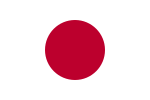Top:Ukiyo-e (Fine Wind, Clear Morning, Rukujogosho hanami, The Great Wave off Kanagawa)
Second left:The Great Buddha of Kamakura at Kōtoku-in
Second center:The Torii and Rōmon of Fushimi Inari-taisha
Second right:The Body armor and Kabuto in Edo period
Third left:Hinamatsuri (Girl's dolls day of Peach festival)
Third center:Byōdō-in (Wayō architectural style of Heian period)
Third right:Osechi (Bento boxes of New Year)
Bottom:Geisha, Zen garden, Ikebana, Teaism
| Part of a series on the |
| Culture of Japan |
|---|
 |
The culture of Japan has changed greatly over the millennia, from the country's prehistoric Jōmon period, to its contemporary modern culture, which absorbs influences from Asia and other regions of the world.[1]
Since the Jomon period, ancestral groups like the Yayoi and Kofun, who arrived to Japan from Korea and China, respectively, have shaped Japanese culture. Rice cultivation and centralized leadership were introduced by these groups, shaping Japanese culture. Chinese dynasties, particularly the Tang dynasty, have influenced Japanese culture throughout history. After 220 years of isolation, the Meiji era opened Japan to Western influences, enriching and diversifying Japanese culture. Popular culture shows how much contemporary Japanese culture influences the world.[2]
- ^ Haffner, John; Klett, Tomas; Lehmann, Jean-Pierre (2009). Japan's Open Future: An Agenda for Global Citizenship. Anthem Press. p. 17. ISBN 978-1843313113.
- ^ Tai, Eika (2003). "Rethinking Culture, National Culture, and Japanese Culture". Japanese Language and Literature. 37 (1): 1–26. doi:10.2307/3594873. ISSN 1536-7827. JSTOR 3594873.












